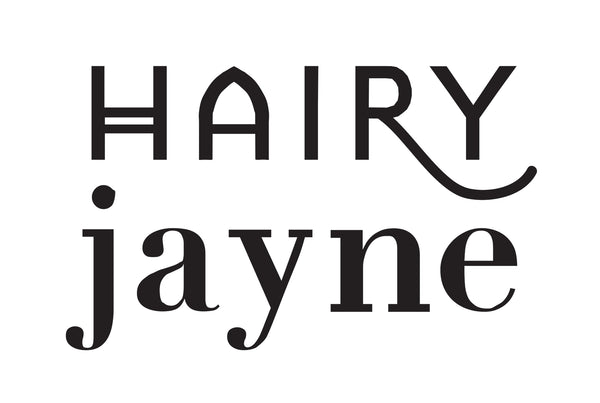
Hair porosity: the balancing act of moisture and protein for healthy hair
What is the secret to healthier hair? The answer lies in understanding hair porosity and preventing dryness within the strands. Healthy hair needs to be able to retain moisturise to prevent any damage. For this reason, hair conditioners are meant to moisturise the hair to keep it in good condition.
But did you know that hair also needs protein to maintain a good porosity? Healthy hair is a balancing act of both moisture and protein.
Hair with a high porosity will allow moisture to escape and go to waste. Getting the right amount of moisture and protein into your hair when conditioning it is important if you want to have healthy hair.
What is high porosity hair?
Healthy hair has an outer layer, or cuticle, that is smooth and reflects the light. This is what makes it appear shiny. The cuticle has a strong resemblance to microscopic roof tiles. In healthy hair the cuticle sits flat but slightly raised – just enough to let moisture in that the hair needs. When the cuticle is raised too much, holes start to appear. This is known as very porous, or high porosity, hair.

The moisture and protein balance in hair care
Moisture inside of the hair keeps it bendy and elasticated so that it doesn’t snap off under pressure. A small amount of moisture should ideally be able to seep under the cuticle without causing the cuticle to swell up too much. Porous hair, though, will allow too much water in through the holes, which causes the strands to feels even more damaged and rough.
Protein ingredients in hair care sit on top of the cuticle and fill in any holes by coating it with a film. It temporarily fills in any gaps in the cuticle that cause moisture to leak out, and too much moisture to get in. This is because protein is structurally similar to keratin, and keratin is what our hair is naturally made from.
For this reason, both protein and moisturising ingredients need to be included in hair care products to maintain healthy hair. They are often used in a multitude of hair care products – shampoo, conditioners and styling products, so either one of them can build up too much, over time, causing the levels to become unbalanced.
As in, too much of a good thing can sometimes lead to hair problems.
Protein build-up in the hair
If too much protein builds up in the hair, it almost becomes too strong. It stiffens, becomes brittle and loses its elasticity. Hair elasticity is important because your hair needs to be able to be pulled to a certain degree (through brushing etc) without it breaking or snapping off.
Protein overload usually happens in porous hair types. High porosity hair types tend to be curly, coarse and colour damaged hair. These hair types usually have lots of cuticle gaps and holes to fill in, so protein appears more often as an ingredient in hair care products formulated especially for them.
Protein is very helpful with curl definition too, so it is often featured in hair products formulated for curly hair. The problem is that over time, these protein-rich products can build up, especially when using several protein-rich products at a time.
The tell-tale signs of protein buildup
1. Hair breaking or snapping easily when wet or dry
2. Excess hair shedding
3. Hair looks dull and lacks shine
4. Hair feels brittle and rough to touch
5. Strands tangle very easily
6. The ends are straighter than the midlengths
Aren’t these signs of a lack of moisture?
These can also be signs that your hair is actually very dry. Or that you need a haircut. But if you have had your hair trimmed recently, or have upped your conditioner to a more deeply moisturising one, protein build-up could be the culprit for these signs.
How to maintain a protein and moisture balance
If you use Hairy Jayne shampoos and conditioners, a protein buildup is very unlikely. Our shampoos, hair care oils or sprays don't contain any protein – there is only protein (in well-balanced amounts) of in our range of conditioners.
We use hydrolysed wheat protein in our conditioners at around 2-3% of the whole formulation. Hydrolysed proteins are small enough to soak into the cuticle. This type of protein, in these quantities, balances nicely with the moisturising ingredients we use. Which gives a good, healthy dose of both strength and moisture when our conditioners are used regularly.
[product=cream-conditioner|variants=Citrus / Regular,Citrus / Jumbo,Citrus / Travel,Citrus / Regular refill,Citrus / Jumbo refill,Floral / Regular,Floral / Jumbo,Floral / Travel,Floral / Regular refill,Floral / Jumbo refill,Musk / Regular,Musk / Jumbo,Musk / Travel,Musk / Regular refill,Musk / Jumbo refill]
Cream Conditioner with added hydrolysed wheat protein and moisturising plant oils – fractionated coconut, rice bran and olive. Choose your fragrance.
[/product]
Protein and hair porosity
Not all heads of hair are the same. Some hair is more sensitive to protein than others. Low porosity hair has a closed cuticle, meaning there is little to no gap for moisture or protein to be absorbed. Protein sits on top of non-porous hair which makes it appear greasy, even though it’s just been washed. The same goes for oils and waxes.
If you are using multiple leave-in and styling products, check the ingredients list and see how far up the list the protein is. The earlier in the list, the higher the concentration of protein. Proteins that don’t have “protein” in their name on hair care labels include keratin, amino acids and biotin. Be aware that the more hair products you’re using, the more protein you could potentially be adding to your hair.

What to do if you have overdone it with the protein
To reverse the effects of protein build up in your hair, you can try the following steps.
1. Firstly look at at the labels of all the hair styling products you’re using and stop using any that have protein in.
2. Avoid using neat coconut oil in your hair as it slows down protein loss, making the protein build up reversal process harder.
3. Clarify your hair by giving it a wash with washing up liquid. Not normally recommended as it is quite harsh on your hair, but washing up liquid has enzymes in it that break down protein. Only do this once and for this purpose only. If you have colour treated hair, skip this step as it will strip out some of your hair colour, especially semi permanent colours.
4. Deep condition your hair with a protein free or very low protein hair conditioner. Mix about a tablespoon of olive oil into our customisable Conditioner Base or Light Conditioner. Apply it generously to your hair and gently comb it right through, starting from the ends of the hair and working up. Wrap your hair in a towel or hair wrap, and leave for 30 minutes.
5. Use a Hairy Jayne Shampoo Bar to gently wash any conditioner residue from your hair. Our sulphate free shampoo bars are protein free and contain aloe vera and mango butter which help to replenish the hair’s moisture levels.
6. Towel dry your hair and apply a few drops of our Natural Beauty Oil to the mid-lengths and ends. Comb through thoroughly with a wide tooth comb. This will seal the hair and trap moisture in.
7. Depending on how overloaded with protein your hair is, repeat steps 4-6 for a few weeks to several months until it starts to feel softer and healthier.
Hair elasticity strand test
If you’re unsure about your hair’s health and elasticity, there is a small test you can perform. Firmly hold a strand of your wet hair between your two index fingers and gently try to stretch it.
If it breaks quickly, it’s a sign of protein overload. If it stretches without breaking straight away it has good elasticity it is well balanced. If it is overly stretchy then it has too much moisture and not enough protein.
If you’re concerned that your hair is damaged and has become too elasticised, use our Treatment Conditioner whenever you shampoo and weekly as a treatment masque.
[product=treatment-conditioner|variants=Citrus / Regular,Citrus / Jumbo,Citrus / Travel tin,Citrus / Regular refill,Citrus / Jumbo refill,Floral / Regular,Floral / Jumbo,Floral / Travel tin,Floral / Regular refill,Floral / Jumbo refill,Musk / Regular,Musk / Jumbo,Musk / Travel tin,Musk / Regular refill,Musk / Jumbo refill]
Use as a weekly treatment to maintain a healthy protein and moisture balance.
[/product]
For more hair care tips and tricks from a hairdresser, sign up to our emails or follow us on Pinterest and Instagram.
